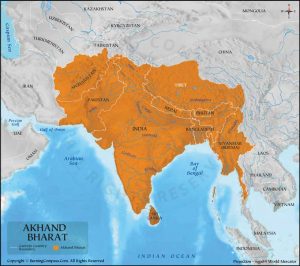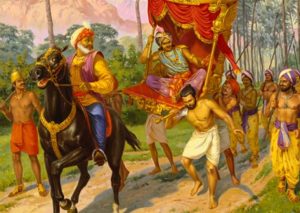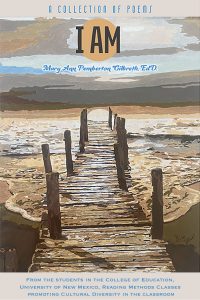Cultural Hegemony & Untold Genocides V2 by Dr. Rinita Mazumdar
What in the globe is known as “India” is not what Indians call their land, the word “India” came from foreigners who called people living by the Sindhu river (now in North West India and Pakistan), or “Sapta Sindhu” “Sapta” is the number seven, Probably, the Arabs (ancient Arabs of Mesopotamia, Syria, etc) could not pronounce “S” and turned it into “H” and called it “Hindu” from Sindhu. According to some researchers, “India” comes from the word “Indu”, which in Sanskrit is “moon”. The land of the moon. Indeed, Shiva carries the crescent moon on his head. Most probably India came from Sindhu, the river or Sapta Sindhu, the land of the seven rivers.
In the Indian Constitution and the people in general and in the epics, that place, which is now the Indian Subcontinents divided into several nations, was called “Bharat” and they followed what is known as “Hinduism”.
A Brief History
Origin of the word “Bharat”:
There is a misconception that “Bharat” is named after the king Bharat, son of Dushyanta and Shakuntala. That is not the case. Here is what the research shows:

In the 7th Mandala of the Rigveda there is a description of the Battle of 10 kinds (Dasraajn Yuddha). This was a decisive battle for the establishment of the union and establish the hegemony of the Bharatas and the Kurus over the land later came to be known as “Bharat”. According to Michael Witzel, the battle was fought between 1450 and 1300 BCE. The historicity of this battle was accepted by Geldener. The king on the Bharat side was Sudas Paijavana and Vashist (as mentioned in the Rg Veda). In the Samaveda and Yujurveda the names changed. The patron Deity of the Bharatas was Indra.
The Bharatas crossed the rivers Beas and Sutlej towards Kurushetra and met an alliance of kings (probably 10). They were Purus, Yadu’s, Yaksu, Matsya, Druhyus, Pahtas, Bhalanas, Alinas, Vishanin, Sivas, Vaikarnas, and Anu. There were feuds between the Bharatas and their opposite aliances. Some sources say that the alliance opposed to the Bharatas stole cows from the Bharatas, while others say that the conflict was over who would control the rivers (Ranabir Chakravarty) . The first phase of the battle was fought on the banks of Ravi (Prasuni) west of Kurushetra. Despite the fact that there were more people on the side of the alliance, nonetheless, King Sudas won the war by strategic breaching of a dyke on the river thereby drowning most of the opponents; also they were blessed by their patron deity, Indra. This battle was decisive as Bharatas occupied the entire Puru territory (Western Punjab) centered around Saraswati and then went east and set their kingdom with the Ashvamedha Yajna. The Khandav Forest had to be conquered and the Kikutas had to be defeated. From the hymns it is possible to conclude that an alliance of the Purus and Bharatas and others were formed. After this the ground shifted to the banks of the Yamuna and Bhida, Sighras and Yaksus were alliances that were defeated.

According to John Brockington this is the nucleus which from which the Kurushetra war of the epic Mahabharata was written. According to S.S. N. Murthy and Walter Ruben this battle inspired the kurushetra story of the Mahabharat. Whatever it is, most historians agree that this battle was decisive in establishing the Bharat and kuru clan over vast tracts of lands as a union by bringing disparate clans together and forming a union. It is believed that the descendants of this clan ruled over the land that is Bharat now and is possibly the ancestors of the modern people living in the region called “Bharat’ or “India”.
In Vedic cosmology, there are seven islands surrounded by oceans, and each island is divided into several ‘territories”. Each territory has a name and the word VARSHA attached to them to signify the territory. The territory in which the Kurus and the Bharatas established their union is Bharatvarsha. To the north of this territory is Ilabrita VARSHA.
References:
- Witzel, M (1997) The Development of the Vedic Schools and Political Miliiue” Harvard Oriental Series.
- Witzel, M. “4 Early Indian history: Linguistics and textual parameters” In Erdosy George 9ed) The Indo Aryans of Ancient South Asian Language, Material Culture and Ethnicity Indian Philological and South Asian Studied,
- Murthy, S.S. The Questionable historicity of the Mahabharata, Journal of Vedic Studies, 10 (5) 1.
- Rg Veda: Bengali Translation.
- Brereton, Joel P.; Jamison, Stephanie W., eds. (2014). The Rigveda: The Earliest Religious Poetry of India. Vol. I. Oxford University Press. pp. 880, 902–905, 923–925, 1.
- Palihawadana, Mahinda (2017). Mumm, Peter-Arnold; West, Tina (eds.). “The Indra Cult as Ideology A Clue to Power Struggle in an Ancient Society”. Electronic Journal of Vedic Studies. 24 (2): 51.
Find previous articles of Dr. Mazumdar's series on Global Conflict by clicking here.


















